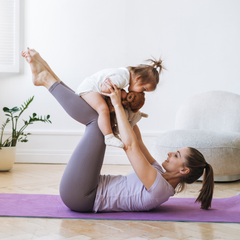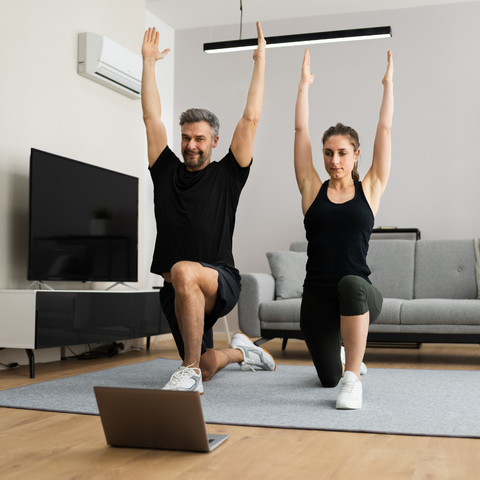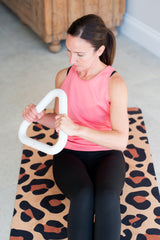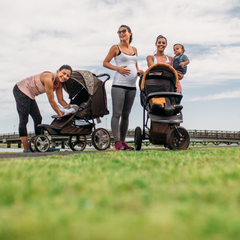
Finding the Strategies to Overcome Barriers and Unlock the Physical and Mental Health Benefits of Exercise.
We all know moving regularly is good for us. As well as the medical benefits, in a recent study (the largest global study of its kind) by Asics), it was reported that over 80% of women endorsed the intrinsic and health related reasons for exercise, including the physical benefits, self-care, mental wellbeing, staying in shape, managing stress, feeling happy, and enjoying exercise/sport. However, Asics have uncovered a significant gender exercise gap, indicating that women, especially young women, exercise less than men, and this disparity increases with age. So, if we understand the benefits, and actually feel the positive effects of them, why aren’t we making the time to ensure exercise is part of our daily routine?
The findings
There was a direct link between women’s physical activity and their state of mind, women who moved more, felt better. If they were exercising regularly, women reported feeling happier, more confident and less stressed. However, it was also reported that around the world over half of women are not exercising as much as they would like to and are losing out on the mental and physical health benefits.
Employed women, mothers and homemakers were the least active groups of women, while students and retired women were the most active. Although 51% of women reported decreasing or stopping exercise as they got older, and all women were facing a myriad universal challenging and barriers to exercise throughout their lifetime.
‘If they were exercising regularly, women reported feeling happier, more confident and less stressed’.

Key barriers
We may try to fit in a morning workout, a lunchtime run or a post work class, but unless we are committed to our schedule, life, how we feel, and work, can too easily get in the way. How often do we then give up on the plan completely, before making a new promise a few months later and starting again? Often only when a holiday or an event is looming! The most reported barriers were lack of time (74%), too many other commitments (76%), low self-confidence (55%), the cost of gyms (59%) and the cost of coaches and trainers (62%). Almost two-thirds of mothers cited motherhood as the primary reason they dropped out of doing regular exercise. Gendered expectations and stereotypes about caregiving and household responsibilities were also shown to negatively impact women’s exercise levels and 38% of women said they lacked the access to the relevant equipment or space to exercise.

The importance of creating a foundation of regular movement
Exercise can reduce our risk of major illness (coronary heart disease, strokes, type 2 diabetes and cancer) as well as lower risk of early death by up to 30%. As well as that, exercise improves our quality of life while we are here as well, our bone and muscle strength, recovery from illness, how tired we feel and how easily we can move and run around after the family. Further benefits also include quality of sleep, boosting self-esteem and improving our mood. All benefits the study noted that the participants endorsed. So how much do we need to do? The NHS recommends completing 150 minutes per week (or 75 minutes of vigorous exercise) through a variety of activity and including strength training sessions during that time. They also recommend reducing the time sitting down (standing desk anyone?) and breaking up long periods of inactivity. However, if you hit your target and are also spending a lot of time sitting or lying down, this can still have a negative impact on your health, so it’s important to note to keep moving throughout the day.

Motivation
How do we get motivated and, more importantly stay motivated? According to the report friends are women’s most important exercise influencers. Women are most motivated to exercise by those who are similar to themselves. However, if your friends don’t exercise, or you feel you have no one close to workout with, you can find likeminded women of all ages and abilities to workout with. This Girl Can promotes hundreds of classes and clubs for a diversity of women. There are so many trainers from all backgrounds online or in person, where you can find new friends to exercise with and support you!

After friends, the second most common exercise or sport influencers for women were parents in childhood (twice as likely for younger women) or romantic partners in adulthood. This is a great reminder of the examples we set and encourage in our children and that exercise, and healthy habits should be top of that list to support a lifetime of health and fitness. You don’t need to feel guilty and take time away from the family and partners to exercise, you can incorporate weekend walks, bike rides, home workouts and yoga sessions together to create precious family time while staying active, hitting your step count and weekly exercise goals.
Actions we can take – report recommendations.
1. Making movement accessible and affordable.
A home workout with an affordable training programme and compact, convenient workout equipment is really all you need to get going, or back into exercising regularly. There are a huge number of home workout programmes to choose from, and you can easily find one to suit your budget, level, needs, interests, and goals.

Whether you are into a short, quick HIIT session a few times a week, strength training, Pilates class or nourishing yoga flow, there are options for everyone, including pre-and post-natal programmes for pregnancy and new Mums. You can find trainers with home workout programmes on You Tube (including the Amp Wellbeing channel), on Instagram, or on our workout centre platform! There is no need to splash out on a full home gym to start with, many programmes can be completed with no equipment, using bodyweight resistance, or starting with water bottles for weights and build up from there.
2. Creating safe and inclusive spaces for women.
Of course, this is essential for gyms and studios to review and home workouts are not an alternative to the importance of safety for those who prefer that environment in which to workout. There are now more workout spaces solely for women, but really the point is that all gyms should be safe and welcoming for women. However, given the high percentage of women that cite body insecurity, lack of confidence to exercise and feeling too intimidated to start, home workouts can be a safe and inexpensive place to start, test out different types of exercise and develop a foundation and confidence to build onto attending gyms and studio classes.
3. Workout with friends, partners and family
Having a personal goal to work towards facilitated exercise for 65% of women and for 43% of women booking races or events was a motivator for exercise. Think about what you want to achieve this year and set a clear SMART goal to work towards! Goals really do help you keep on track and adding a workout buddy, or exercising with your partner helps to keep you accountable and motivated to achieve it.
In the report, 43% of women said that working out with teammates or friends encouraged them to embrace physical activity and/or kept them going. Even if it is one session a week, for a run, a boot camp or a tennis match, find someone who can help keep you accountable for moving on that day. If you workout online, share in the comments and community to keep engaged and committed to showing up.
4. Exercise can just be for fun, feeling good and enjoyment. Impress yourself!
Let’s get rid of the stigma around what exercise is, what it needs to look like, as well as the reasons why we exercise. You don’t have to be a pro athlete to enjoy team sports or want to be the first to finish the race. You don’t have to workout 5 times a week at home and follow a strict programme to be fit and for it to be worth it (unless you have a particular goal in mind, then that helps!). And women don’t just exercise ‘look good’ (however it has been shown men exercise more for enjoyment than women do). Just focus on exercises that are beneficial to you and that you can enjoy doing regularly. Enjoy a walk? Try and fit in 150 minutes over the week. Enjoy a mix? Schedule different classes such as yoga, Pilates and strength training and work around that, often a varied routine helps keep our interest, and motivation, high.

5. Encouraging women now, and our future generations
Educating everyone about the specific needs of girls and women in sport an exercise is an important step in helping make exercise an accepted and encouraged part of every day. This Girl Can, Women in Sport, and Asics have launched Move her Mind as a platform to support all women get involved in sport and exercise. The platform shares resources and stories to support, encourage and inspire more women to move.
This Girl Can has a wealth of information, motivation and support on getting started, or back into exercise. There are so many tips, ideas and signposts on how to ease yourself in, juggle life and exercise, keeping motivated and overcoming any nerves of joining in.
It was also found that supporting, role-modelling and encouraging exercise in children and within the family is central to keep women exercising throughout their lives. How can you incorporate exercise into your families weekly habits? Read our blog on Balancing Family, Work and Fitness here for ideas. If you already do, please share your tips in the comments below!

Next steps
Women are already at a disadvantage from the gender health gap, however the gender exercise gap is something we can takes steps to address in our own life, which can also contribute to supporting our overall health and wellbeing. We know by incorporating more movement into our lives we can maximise the physical benefits, enjoy self-care, support our mental wellbeing, stay in shape, manage stress, feel happier, and just enjoy exercise and sport. Let’s all encourage each other, and ourselves, to move more and feel better, then we can all enjoy the benefits and close the gap. How will you move today?
